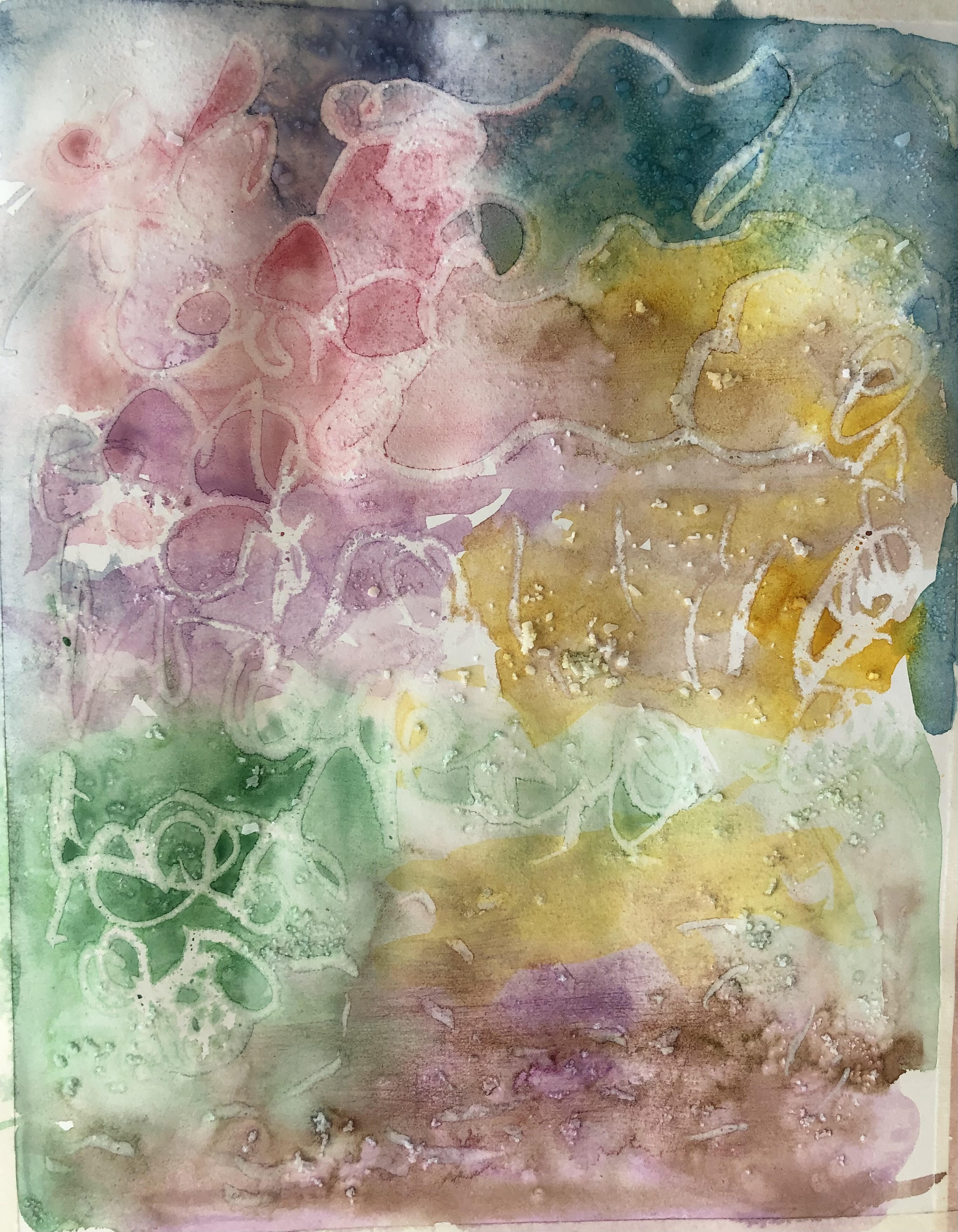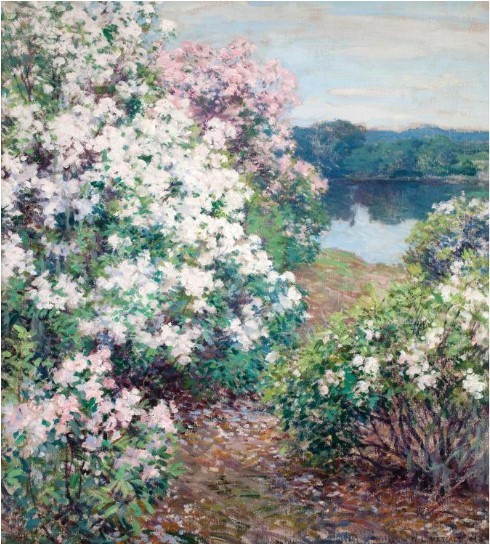Salt Watercolor Paintings

Inspired by Willard Metcalf (1858-1925)

Willard Metcalf, Mountain Laurel, 1905. Oil on canvas. Charles and Elizabeth Buchanan Foundation, 1989.36
Willard Metcalf (1858-1925) was an American Impressionist painter and founding member of the Ten American Painters from Lowell, Massachusetts. During the start of his career, Metcalf traveled extensively throughout New England sketching and painting. He also took trips abroad to France, England, Algeria, and Tunis. Metcalf developed an appreciation for plain-air painting, natural light, and high-keyed color that later informed his New England landscapes. Prior to finding his mature style, best described as poetic interpretation of the New England Landscapes, Metcalf experimented widely with mediums and styles from figurative illustrations to allegorical mural painting.
Mountain Laurel (the state flower of Connecticut) was painted at Old Lyme along the Lieutenant River, the site of a flourishing artists' colony. The picture marks a high point in Metcalf's career and showcases his mature style.
What happens when we add salt to watercolors? The texture and color of the paints change! When a piece of salt is dropped onto wet watercolors, the salt is very greedy for the water and pulls as much liquid as it can to it. Salt is a super special hygroscopic substance. All that means is that salt attracts water and pigment molecules so the watercolors want to be near the grains of salt. Some of the water is absorbed into the grains of salt, and some is left behind which creates a new texture. This is a physical reaction!
Different salts will make different textures. Try this art activity again using other salts, like coarse kosher salt, pretzel salt, or table salt.